What was the most-linked-to content marketing content on the web in 2017?
Read on, and I’ll provide an overview of the top pieces of content in 2017 to date, along with an analysis of what it means for your content marketing strategies. The analysis includes 1021 pieces of content, all of which were shown to have received more than 300 links. The data has been provided to us courtesy of the awesome team at BuzzSumo, and the analysis has been done by yours truly.
Brief Background
BuzzSumo regularly monitors social media to see what content is being shared, and as part of that, they crawl over 2 million articles a day from the articles people share on Twitter, Facebook, and LinkedIn. This means that links from pages on the web that were not in that crawling sample are NOT counted in the link totals shown in the data. In addition, content that is not shared via social sites, and the number of links that those get, is also not considered.
As a result, the focus of this study ends up being on content published that had enough merit to be shared in social media. The data does include pages that are for product information, requests for donations, and other types of content that you may not think of as being content marketing oriented, but the fact is that they were all promoted on social, and then drew a large response from the audiences that were reached that way.
Summary Analysis of the Data
Not surprisingly, news information dominates this data, with 76.2 percent of the most linked content being news postings. The full breakout is here:
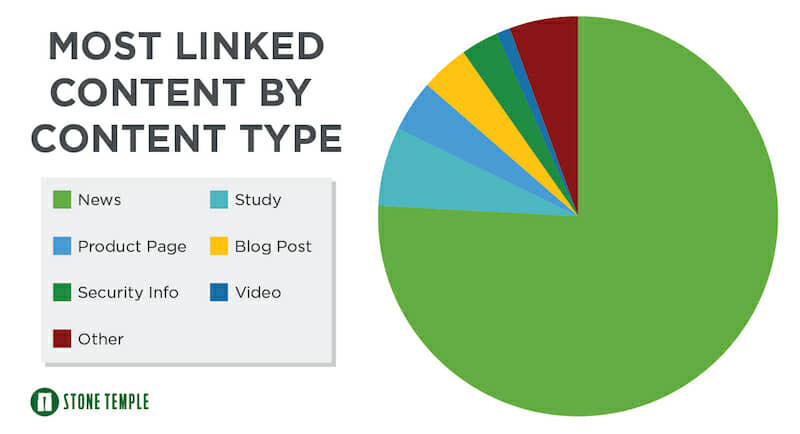
However, note that the second largest category is studies, and the fourth largest category is blog posts. In many cases, these are coming from businesses or individuals that don’t represent major brands. I’ll talk about that more later.
[Tweet “76% of the most-linked-to content in 2017 was news-related. Find out more at” quote=”]
Next, let’s take a look at the types of sites that published the content that got the most links:
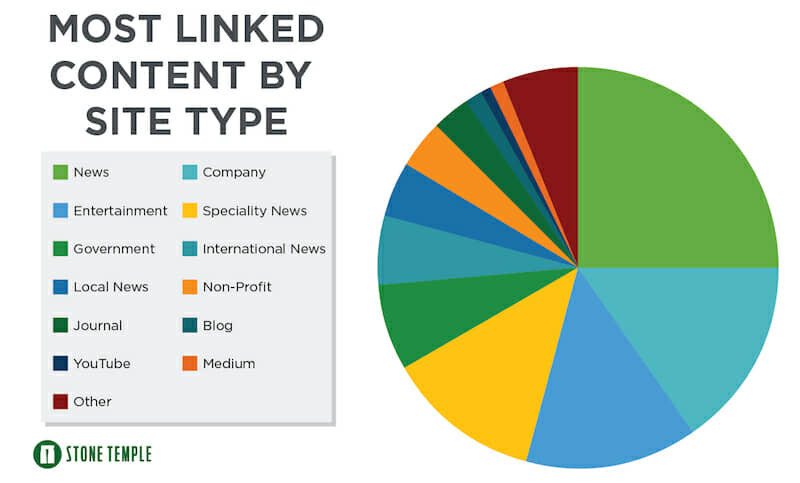
157 of the content pieces were actually published by companies, 40 by non-profits, 12 on blogs, and 11 on Medium. Many other types of sites creep into the mix as well. The following table is the breakdown of the “other” category in the above pie chart:
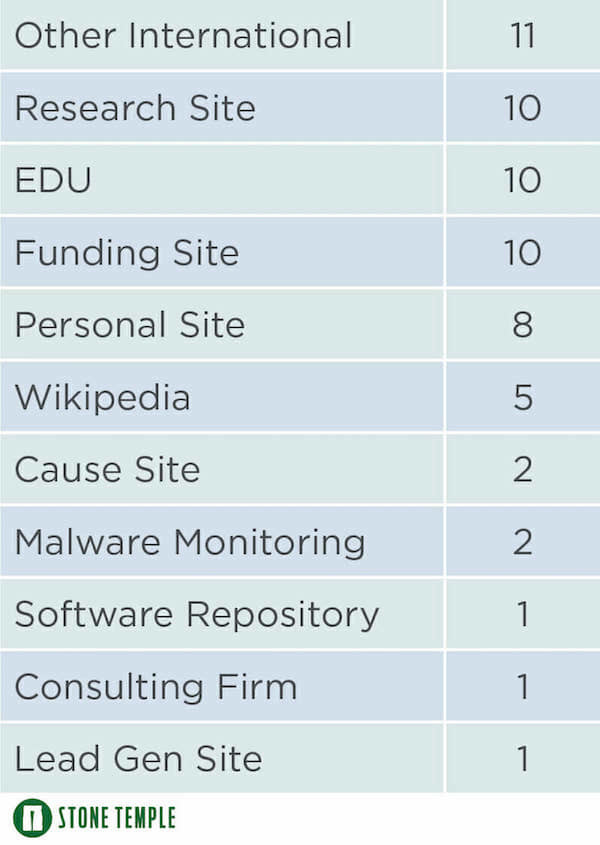
As you can see, many different types of sites have been able to make this elite list. In addition, some of the news content likewise did not come from major media sites. Here is a breakout of the types of sites that generated the hit news articles:
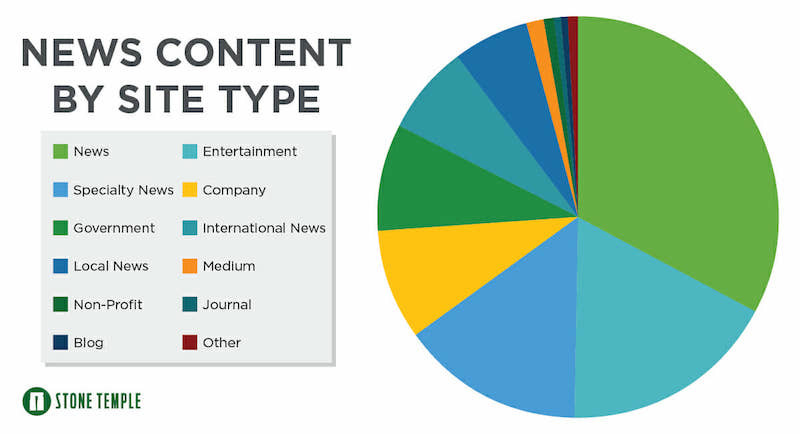
Of course, straight up news sites represent a large percentage of the total news postings (32.8 percent), but companies generated 8.9 percent of the news content, Medium posts were good for another 1.4 percent, and we actually see some blogs in the mix (0.4 percent). Approaching this from another angle, local news sites might be fairly easy for you to get coverage in, and they represent 6 percent of the top content stories.
As noted above, studies did fairly well, so let’s take a look at the breakout of sites responsible for those:
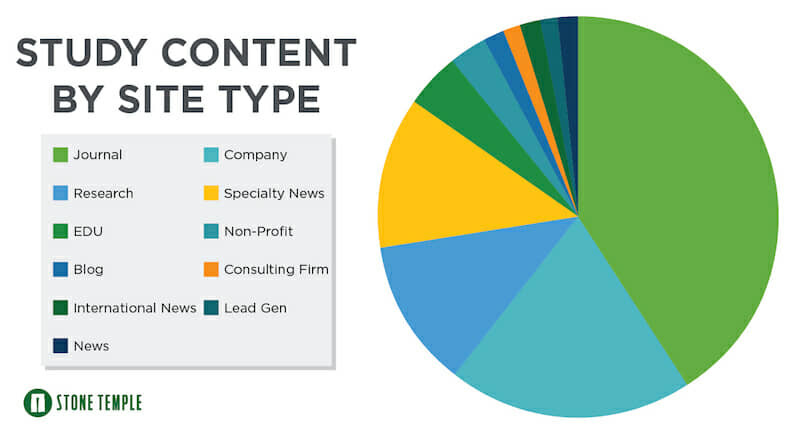
You can see a broad mix of different types of organizations that have had success with studies. This even includes one consulting firm and several marketing agencies. (Perficient Digital was not one of them, but our focus on studies has done extremely well for us!) Studies represent one of the major opportunities for driving content marketing success for a business.
[Tweet “Research studies get lots of links, and many types of sites can earn them. Learn more at”]
Also of interest…
- Do Links Still Matter for SEO in 2017? (Study)
- Here’s Why Your Content Isn’t Getting Links (Video)
- Content Marketing Services from Perficient Digital
- SEO Services from Perficient Digital
Top 40 Linked Posts
Here is a look at the makeup of the top 40 linked posts:
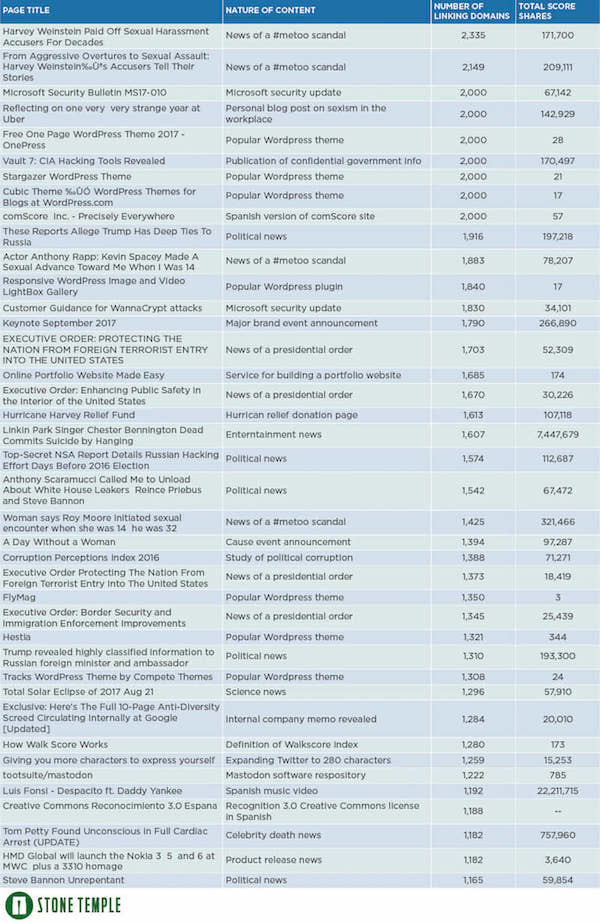
News dominates the top 40 posts, with a major focus on political news, followed by #metoo news. One study manages to crack the top 40. Even more interesting is the fact that six WordPress themes and one WordPress plugin make the short list. One personal blog post, and two Spanish pages, are in the above table.
Only one video makes the list. This is in contrast to BuzzSumo data on the most shared Facebook posts, where videos made 17 out of the top 20 spots.
An Aside: Correlation Between Links and Social Media
The data reconfirms what was shown in the study performed by Moz and BuzzSumo that examined the lack of connection between social shares and links. That study showed a Spearman correlation of 0.011, which suggests that there is basically no correlation at all. In this new BuzzSumo data, we also measured the Spearman and Pearson correlations and got results of 0.15 and 0.11 respectively, which is still pretty low.
For many of us, that seems very non-intuitive – surely content that is shared more gets more links, right? Given the way that social media and linking behavior on the web interact, I think that it’s not that simple. We know that certain types of content, such as cute baby or animal photos, can get tons of social shares, but they don’t get very many links.
We also know that each marketplace behaves quite differently. The number of people that may share political news and commentary posts includes significant portions of the general population that don’t have the ability to implement links to content. In contrast, the relative proportions of “sharers” and “linkers” in other markets, such as science or technology, are probably quite different.
These factors complicate our ability to show any simple one-to-one correlation between links and social shares, so we should simplify our thinking here a bit.
If you create highly relevant, great content, and promote it, your chances of getting both links and social shares will go up. When that content also reinforces your branding and visibility, that’s the definition of a content marketing win.
What This Data Tells Us About Content Marketing Opportunities
Bear in mind that this data focused on all content that was found to have earned more than 300 links from content that was shared on social media. Using that measurement approach, these are the 1,021 most linked content pieces on the web in 2017. In short, this is the elite of the elite.
Yet, we still saw many pieces of content that came from a diverse set of sources. 157 of the content pieces came from businesses, and 67 of those businesses were not major brands. We also saw personal sites, research sites, education sites, agencies, consulting firms, and many other types of sites that were able to make it into the top group.
No doubt, being a large media outlet or a major brand gives you an initial boost from a visibility perspective, and increases your chances of attracting shares and links. But a lot of times these larger players are not as nimble as a small-to-medium-sized business, and their vision can get clouded by broader business goals or branding constraints.
[Tweet “Study shows real opportunities for smaller brands and publishers to be top link-earners.”]
More importantly, what marked the overwhelming majority of the posts on the list is that they offered compelling value and freshness to their target audience. There were basically no evergreen content pieces that made the list.
Keep in mind, going viral on social isn’t always a clear measure of content success, and having the most links is not necessarily either. It’s possible to have far fewer links than these top-linked outliers have, and still be very successful in relation to your own objectives. At Perficient Digital, we’ve succeeded in gaining high rankings for some of our content with a relatively small number of links and social shares.
As a content marketer, your focus needs to be on what you can do to attract the attention of your target audience (and the related media, bloggers, and influencers in your market) with content that grabs their attention.
As the content marketing space gets more crowded with content, the need to accomplish this level of differentiation becomes more and more important. This will require a strong creative drive and effective promotion to make it happen.
But the potential rewards are large and are worth pursuing. The businesses that are able to make content marketing work for them will have a powerful edge over their competitors that don’t.


I’ve got some insights from this post, thanks for the analytical thinking.
Thank you for gathering this information together for us.
If your smart paying attention to most consumed content for your niche can give you a huge boost seo in 2018. Smart SEO people are watching this and acting
I’m using this for my business now, I’m a consultant for self-publishing authors and content is always needed. Thanks Eric.